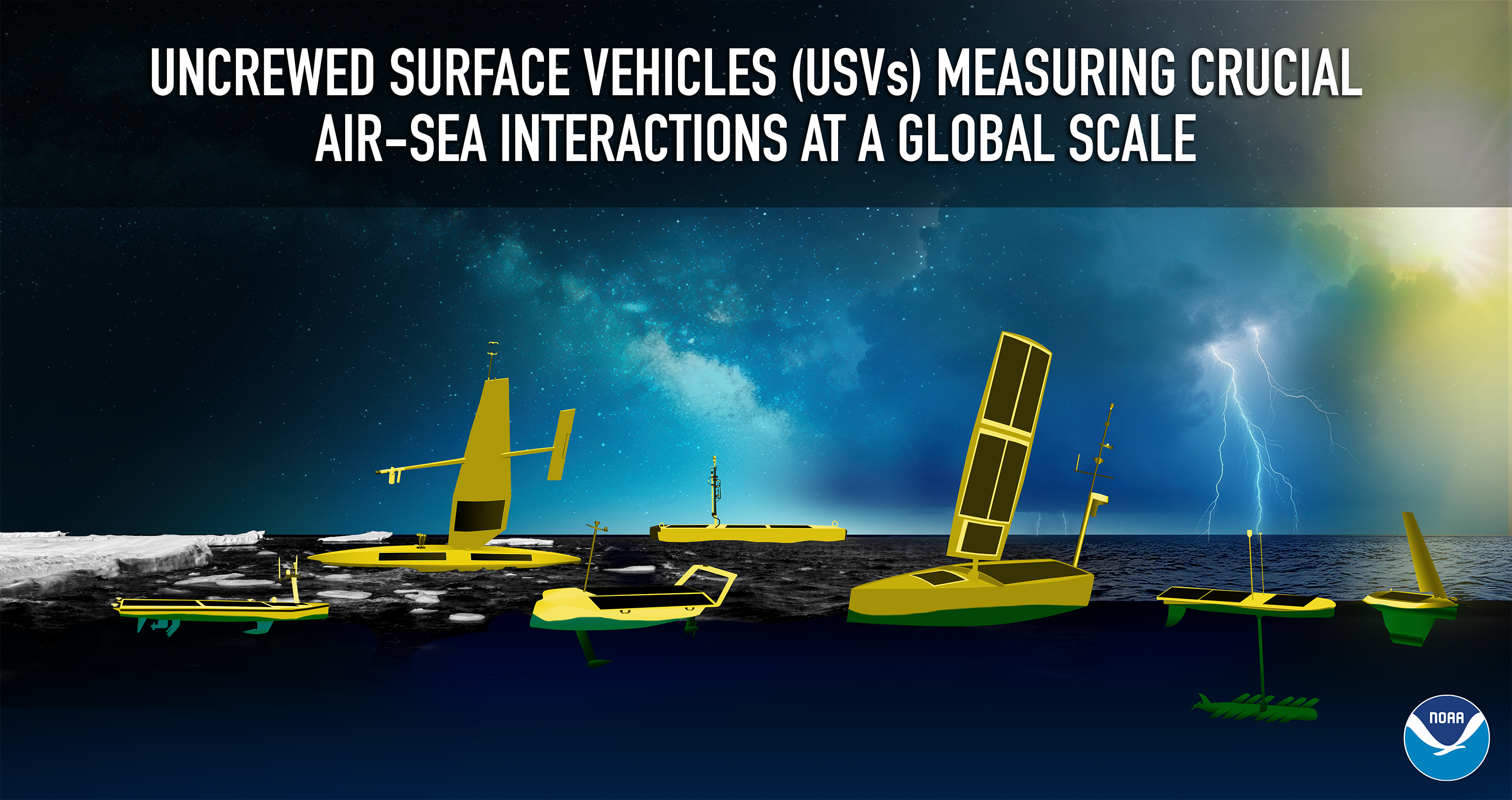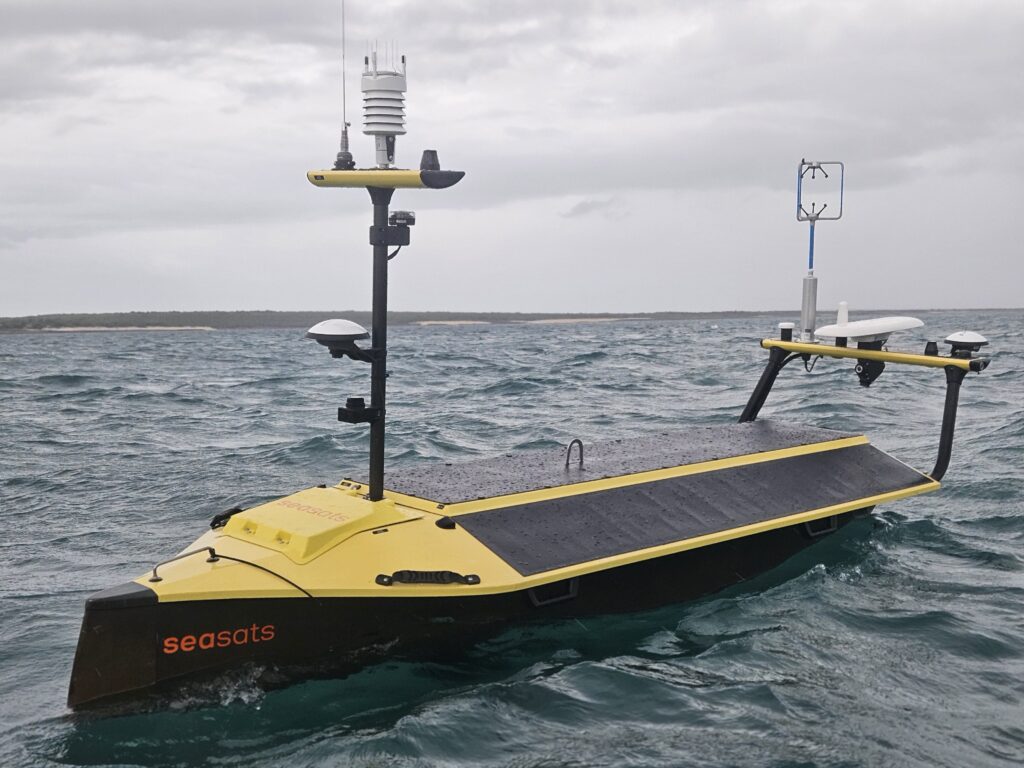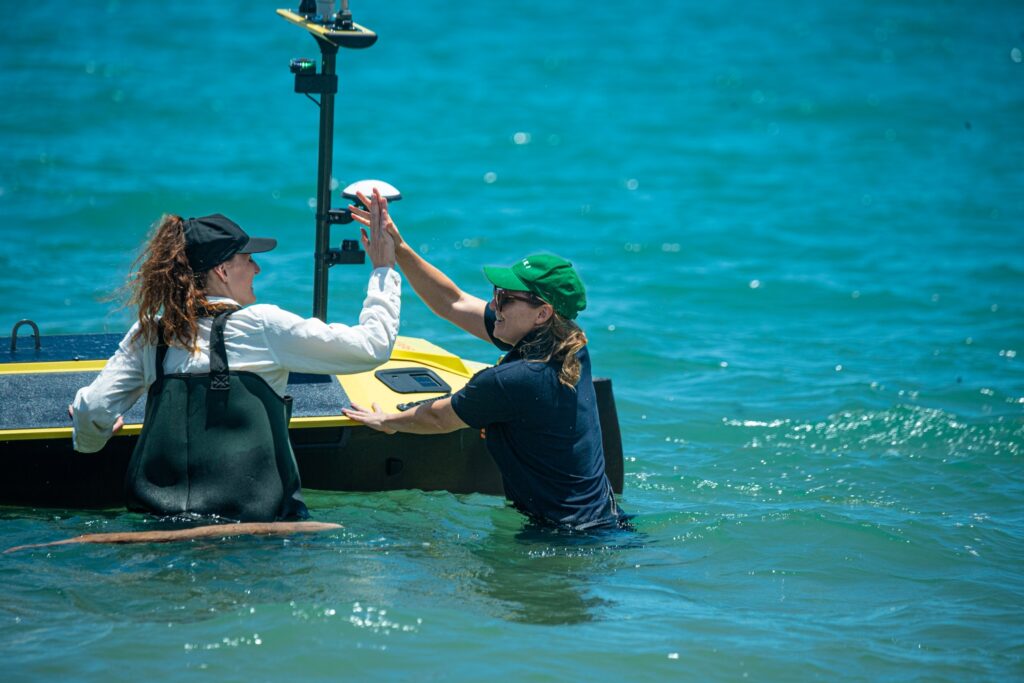A new emerging ocean observing network joins the Global Ocean Observing System (GOOS), marking a key step in expanding coordinated, global ocean surface observations. This fleet of Uncrewed Surface Vehicles, called SUN Fleet, is able to monitor numerous GOOS Essential Ocean Variables and measure important air-sea exchanges in remote areas and under harsh conditions.

The ocean’s surface is one of the most important physical boundaries on our planet. Here, energy from winds, waves, and currents, heat, fresh water, and gases are exchanged between the ocean and atmosphere. These processes influence ocean circulation, weather, climate, and the chemistry of marine ecosystems that support diverse life, including economically important fish species.
Measuring these air-sea exchanges is essential for improving forecasts and understanding the cycling of water, heat, and energy that shape our planet. Yet, the vastness of the ocean and the harsh, remote conditions of many regions have left large areas under-observed. Uncrewed Surface Vehicles (USVs) – small instrumented platforms that operate without an onboard crew – now offer a powerful solution to fill this critical observing gap.

SUN Fleet: Uniting science and industry for a global USV market
A diverse fleet of rugged ocean surface robots has emerged in the last decade, ranging in size from 2 to over 7 meters, capable of withstanding hurricane-strength winds, and equipped to carry instruments measuring up to 26 Essential Ocean and Climate Variables. These variables span physical, biogeochemical, biological and ecological processes, particularly at the air-sea transition zone, and include many surface meteorological variables, making USVs particularly important for marine weather forecasts.
Over the past four years, a global initiative has been underway to coordinate USV observing efforts, develop standards and recommended practices, and support USV manufacturers in entering the scientific market. This work has led to the establishment of the Surface UNcrewed Fleet, or SUN Fleet – a growing international network, uniquely co-designed between science and industry. Taking a radically collaborative approach, the SUN Fleet includes contributions from multiple competing USV manufacturers.
The network’s mission is to unite science and industry to build a profitable, scalable, and sustainable global USV market, which will deliver FAIR (Findable, Accessible, Interoperable, Reusable) and fit-for-purpose ocean observations.
The initiative has been spearheaded by Northern Australian USV specialist Ruth Patterson and NOAA’s Pacific Marine Environmental Laboratory expert in air-sea interactions Meghan Cronin, alongside 51 other industry, academic and government USV specialists from 40 institutions across nine countries to build the vision for an international ocean observing network.
“The true value of these USVs for improving forecasts will come when their data from coastal regions to the remotest regions of the global ocean can be fed into operational models within minutes of being captured,” says Meghan Cronin.
“SUN Fleet will coordinate a global effort with outcomes greater than the sum of the individual parts. Individual USV manufacturers and their investors require a global network of scientists to help them develop their quality-assured data products. SUN Fleet will allow us to transcend traditional siloed approaches to data delivery, and this will benefit industry and humankind,” adds Ruth Patterson.

A new GOOS emerging observing network
In April 2025, the SUN Fleet was endorsed by the GOOS Observations Coordination Group under UNESCO-IOC as an emerging ocean observing network. This designation recognizes that SUN Fleet is organizing at the global level to meet the attributes of an operational global ocean observing network (see GOOS OCG Network attributes).
“The GOOS Observations Coordination Group helps networks reach maturity to deliver observations that are interoperable, accessible, and fit for purpose,” says David Legler, co-chair of the GOOS Steering Committee. “We are very pleased to recognize the amazing progress of the SUN Fleet autonomous observing system,” he adds.
Through a variety of different observing platforms such as ships, buoys, gliders and even animal-borne sensors, the GOOS ocean observing networks collect data on variables such as ocean temperature, currents, waves, sea level, salinity, nutrients, carbon and oxygen.
These measurements of GOOS Essential Ocean Variables are vital to characterizing changes of the global ocean environment. However, critical gaps still exist in our monitoring of the ocean, and the SUN Fleet aims to help fill these at the ocean surface, and in remote and under-observed areas.
“The SUN Fleet brings an exciting new dimension to our global observing capabilities. Their ability to collect high-resolution data in hard-to-reach areas and during extreme conditions, such as in hurricanes, helps close critical gaps in our understanding of ocean-atmosphere interactions, which will ultimately lead to better forecasts. For GOOS, the addition of this emerging network signals both innovation and greater integration – exactly what we need to build a truly responsive, global ocean observing system” says Legler.
—
About GOOS:
The Global Ocean Observing System (GOOS) is the global home of ocean observing expertise and systematic coordination. We lead and support a community of international, regional and national ocean observing programmes, governments, UN agencies, research organizations and individual scientists. Our Core Team of expert panels, observing networks, alliances and projects, supported by the GOOS Management Team, is in touch with ocean observing and forecasting around the world. We are a programme led by the Intergovernmental Oceanographic Commission (IOC) of UNESCO, with UN and science co-sponsors: World Meteorological Organization (WMO), UN Environmental Programme (UNEP) and the International Science Council (ISC).
